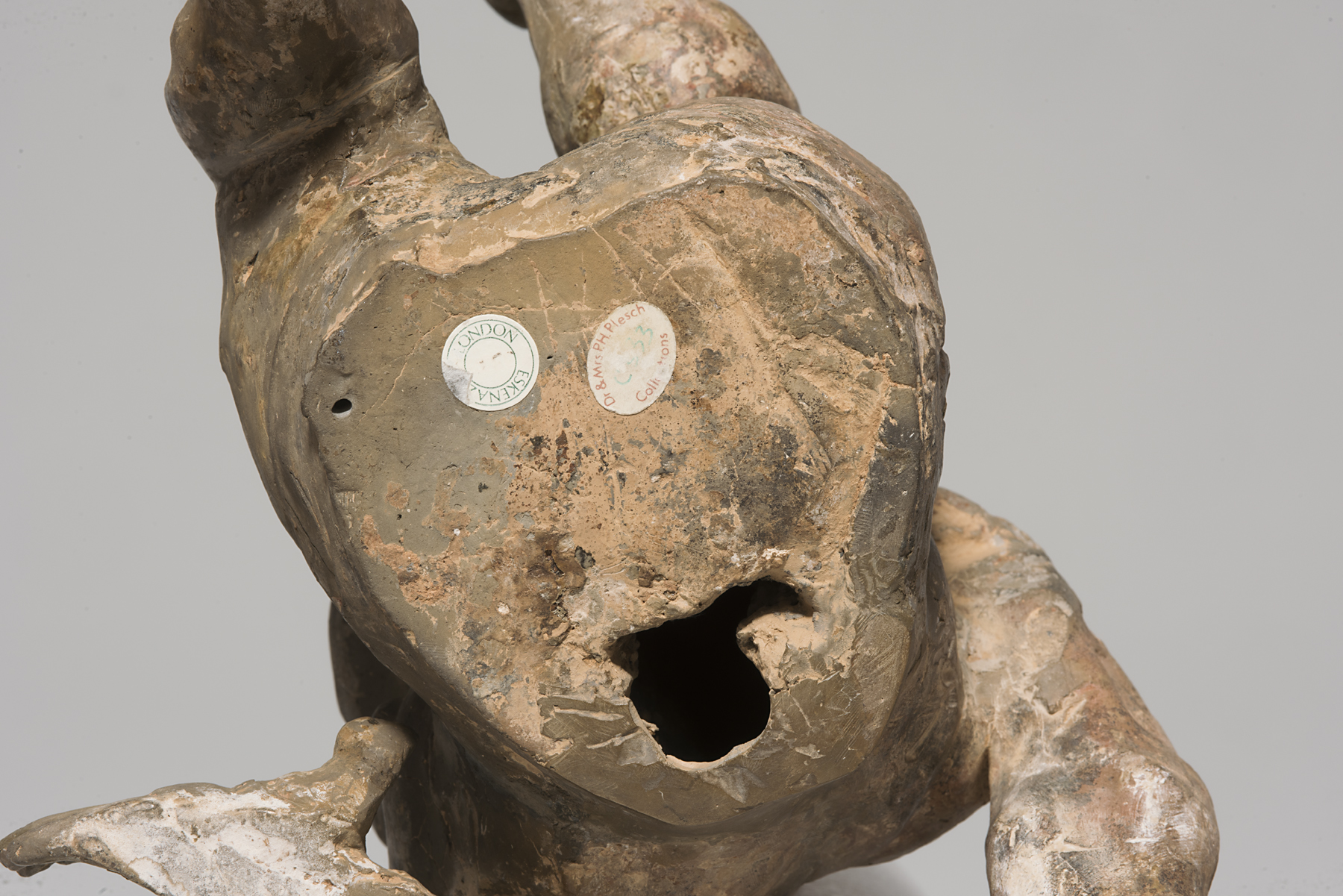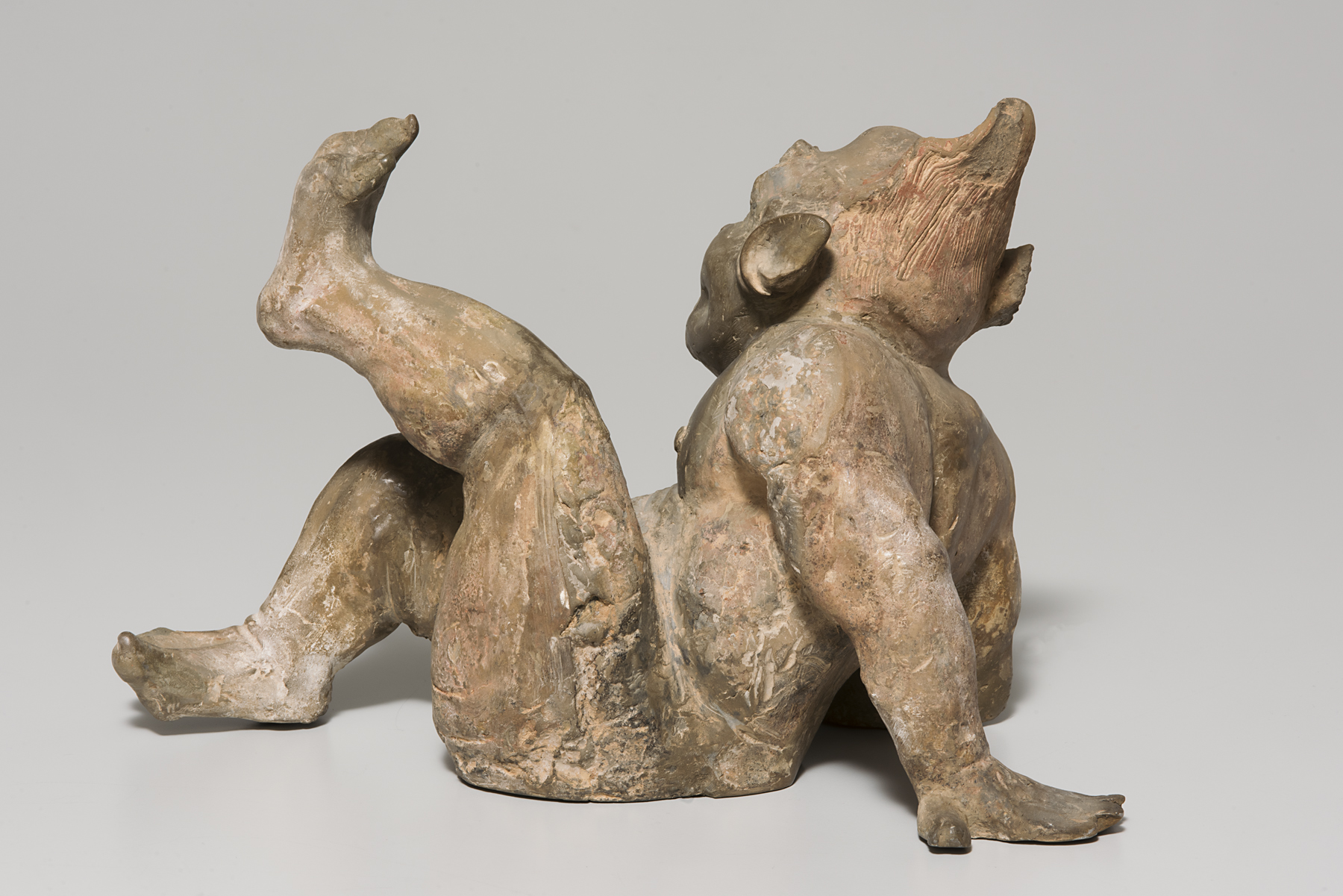Figure of a Demon, unknown maker from China
Artwork Overview
Figure of a Demon
, early 600s CE, Tang dynasty (618 CE–907 CE)
Where object was made: China
Material/technique: pigment; earthenware
Dimensions:
Object Height/Width/Depth (Height x Width x Depth): 21 x 32 x 21 cm
Object Height/Width/Depth (Height x Width x Depth): 8 1/4 x 12 5/8 x 8 1/4 in
Object Height/Width/Depth (Height x Width x Depth): 21 x 32 x 21 cm
Object Height/Width/Depth (Height x Width x Depth): 8 1/4 x 12 5/8 x 8 1/4 in
Credit line: Museum purchase: R. Charles and Mary Margaret Clevenger Art Acquisition Fund
Accession number: 2017.0005
On display: Loo Gallery
If you wish to reproduce this image, please submit an image request







